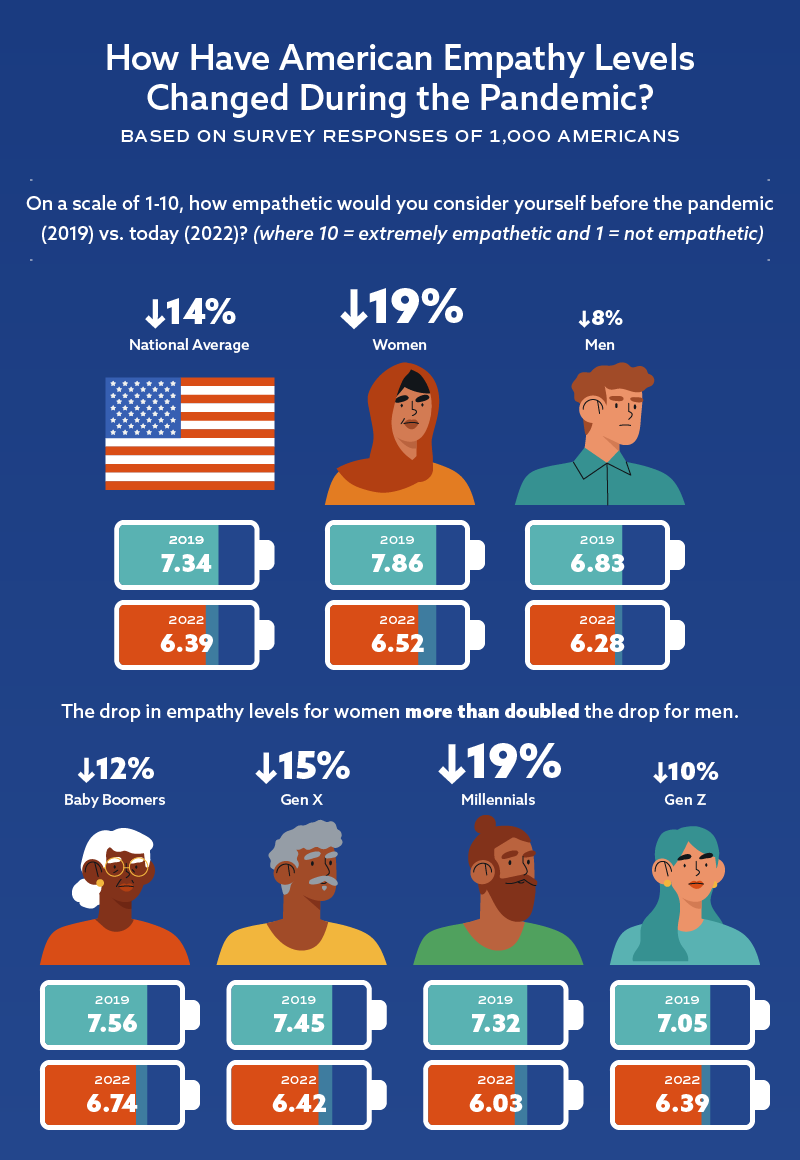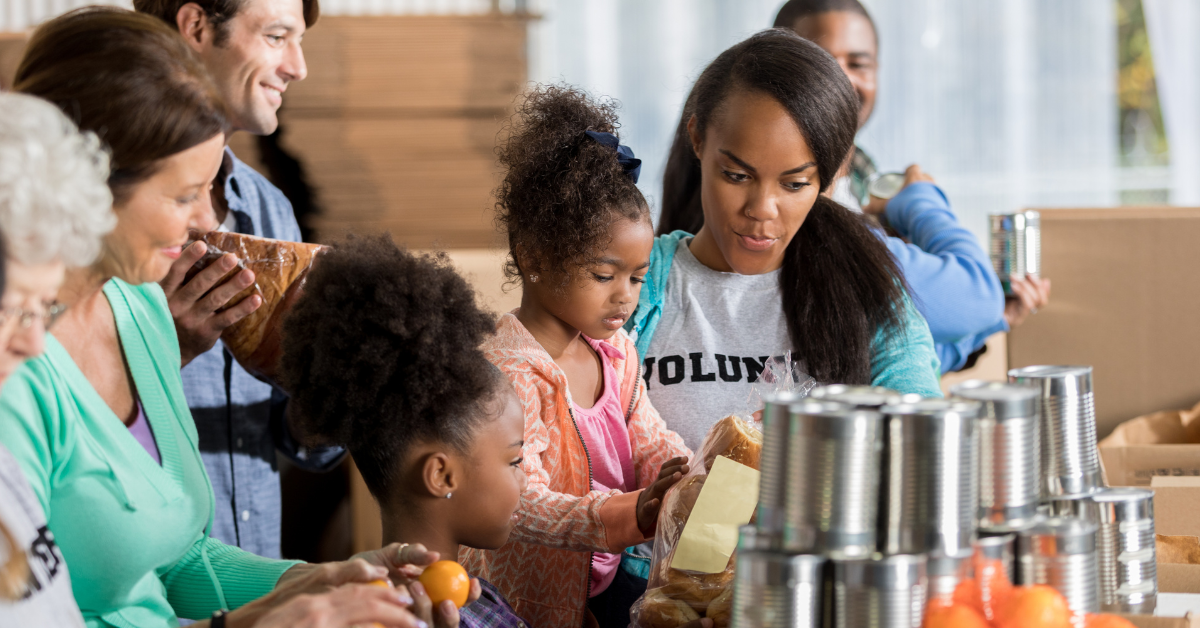
What is Empathy Burnout?
When we think about the experience of living through the last two years—a global pandemic, a mass movement against systemic racism, an invasion of Ukraine—it becomes a wonder how humans are coping. The news is flooded with tragic and disturbing events. We’re collectively drained, overwhelmed and losing our patience. As a result, feelings of numbness, compassion fatigue or empathy burnout start to creep in.
Empathy burnout comes in many forms, but perhaps the most pervasive is emotional exhaustion. Madeline Lucas, a therapist at REAL, says empathy burnout takes shape when “a person is regularly expending much of their energy—emotional, physical, mental—to care for others to the point that they themselves feel exhausted.” Essentially, the cup that was once full is now empty, and given the choice between fight or flight, flight seems like the more tempting option.
To gauge what empathy burnout looks like in the U.S., United Way of the National Capital Area surveyed 1,022 Americans across various demographics and all 50 states from March 10 through March 15, 2022. We asked respondents to rate their empathy levels before and during the pandemic. Additionally, we posed questions about news events contributing to their burnout, characteristics of compassion fatigue they’re experiencing most and coping strategies they turn to for relief.
Read on to learn more how empathy levels have changed in the last two years.
Empathy Levels Drop During the Pandemic
To uncover how empathy levels have changed during the pandemic, we asked respondents to rate their level of empathy before the COVID-19 pandemic (2019) and today (2022) on a scale of one to 10, where one indicates low empathy levels and 10 indicates high empathy levels.
Overall, the empathy ratings of respondents decreased by 14% during the pandemic—7.34 (2019) vs. 6.39 (2022). According to survey responses, millennials have had the steepest drop in empathy during this time frame as their ratings decreased by nearly 20%. What’s more, the drop in empathy for women more than doubled the drop for men—empathy ratings of women decreased by 19% during the pandemic, while ratings of men decreased by 8%.
With negative events consistently saturating our news feeds, 37% of respondents say they currently feel less empathetic toward negative news events, and 57% of women, specifically, say they feel emotionally exhausted after watching negative news (only 28% of men share this sentiment). As a result, many are either pulling back from watching the news altogether or changing where they consume content from. Over a quarter of respondents (27%) have changed where they get their news from due to empathy burnout or misinformation.
With empathy burnout also comes activism fatigue, where people feel powerless and like their actions aren’t making a tangible difference when it comes to social justice issues, or that they’re tired of fighting an uphill battle toward change. Activism fatigue surged after events like the Black Lives Matter protests in 2020 and during recent presidential elections.
Our survey respondents share this sentiment. Sixty-one percent admit to experiencing burnout to social justice issues during the pandemic. Nearly 70% of Gen Zers say the same. One in three respondents says that recent events, like low vaccination rates and the Russian invasion of Ukraine, have increased their empathy fatigue. Additionally, 55% of Gen Zers admit that they have empathized with certain social justice issues, not because of genuine concern or altruism, but because they “felt like they should.” Unfortunately, this is where some activism can start to feel performative.
Empathy Burnout from News & Current Events
When asked which current events have contributed to empathy burnout the most, the majority of respondents (60%) say the Russian invasion of Ukraine, followed by police brutality (49%), the pandemic’s toll on mental health (48%), the U.S. capitol riots in January 2021 (47%) and the death toll caused by COVID-19 (41%).
So, what are common indicators of empathy burnout? When asking which characteristics of empathy burnout respondents were experiencing most, the majority say feeling extremely overwhelmed (55%), followed by lacking the energy to care about things around you (47%), feeling angry or irritable (42%), and isolating yourself from others (42%).
Empathy burnout deters us from staying invested in social issues for more extended periods of time. As Americans, our attention spans are short and we’re becoming more and more desensitized to tragic events. The largest portion of respondents (30%) only stay invested in a social issue a few days after it surfaces in the news. Twenty-three percent of baby boomers say they don’t invest themselves in social issues at all anymore. These are sobering stats because short-lived investment in social issues prevents us from initiating change in our communities.
Does Social Media Exacerbate Burnout?
Does social media intensify empathy burnout? Survey respondents say yes. Fifty-seven percent of respondents say misinformation and toxicity on social media have decreased their empathy levels. Apart from Gen Z, respondents from each generation say Facebook is the social media app most contributing to their empathy burnout. The largest portion of Gen Zers (31%) say Twitter, a platform known for cyberbullying and troll-like commentary, is the worst app when it comes to empathy burnout.
Coping Strategies for Empathy Burnout
With empathy burnout and compassion fatigue, stress comes naturally. We asked respondents which coping strategies are best for managing the stress that’s caused by negative events. The majority of respondents (54%) say rest is the best coping mechanism. A large portion of respondents also say carving out alone time for yourself (53%) and regular exercise (43%) are good antidotes to empathy burnout.
Closing Thoughts
According to our survey results, empathy burnout is widespread and ongoing. Rest, time with loved ones and a healthy lifestyle are critical for recharging so that we can continue to stay invested in the causes and social issues that matter most.
At United Way NCA, we believe change begins with you. Donate, advocate and volunteer to join the equity movement and help underserved communities in the National Capital Area. Learn more at unitedwaynca.org. When none are ignored, all will thrive.









